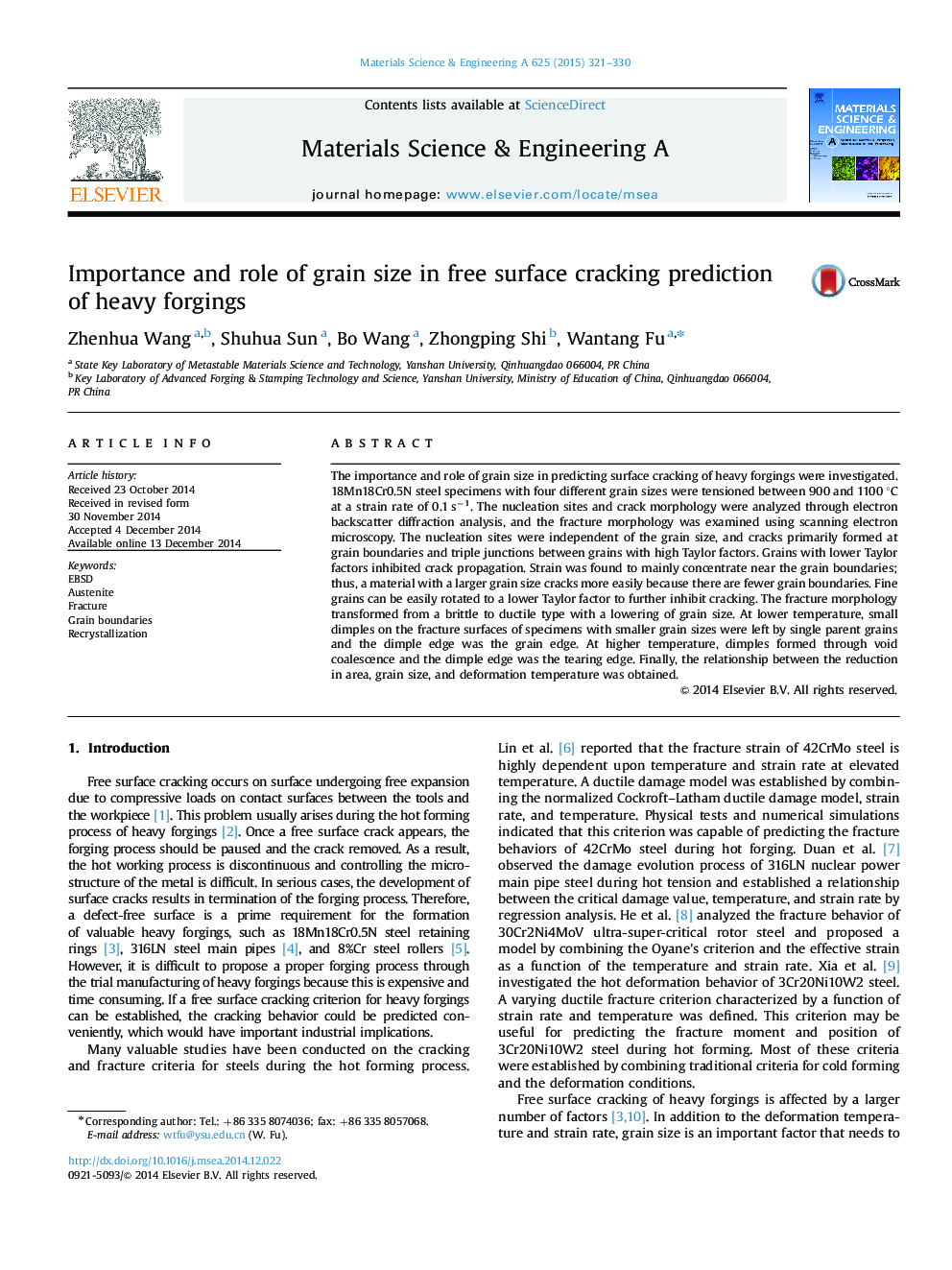| Article ID | Journal | Published Year | Pages | File Type |
|---|---|---|---|---|
| 7979214 | Materials Science and Engineering: A | 2015 | 10 Pages |
Abstract
The importance and role of grain size in predicting surface cracking of heavy forgings were investigated. 18Mn18Cr0.5N steel specimens with four different grain sizes were tensioned between 900 and 1100 °C at a strain rate of 0.1 sâ1. The nucleation sites and crack morphology were analyzed through electron backscatter diffraction analysis, and the fracture morphology was examined using scanning electron microscopy. The nucleation sites were independent of the grain size, and cracks primarily formed at grain boundaries and triple junctions between grains with high Taylor factors. Grains with lower Taylor factors inhibited crack propagation. Strain was found to mainly concentrate near the grain boundaries; thus, a material with a larger grain size cracks more easily because there are fewer grain boundaries. Fine grains can be easily rotated to a lower Taylor factor to further inhibit cracking. The fracture morphology transformed from a brittle to ductile type with a lowering of grain size. At lower temperature, small dimples on the fracture surfaces of specimens with smaller grain sizes were left by single parent grains and the dimple edge was the grain edge. At higher temperature, dimples formed through void coalescence and the dimple edge was the tearing edge. Finally, the relationship between the reduction in area, grain size, and deformation temperature was obtained.
Related Topics
Physical Sciences and Engineering
Materials Science
Materials Science (General)
Authors
Zhenhua Wang, Shuhua Sun, Bo Wang, Zhongping Shi, Wantang Fu,
